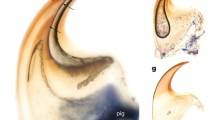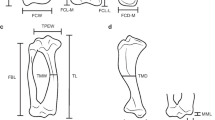Abstract
The functional modifications of myodocopan and podocopan ostracod limbs constitute a rich data set with which to carry out phylogenetic analyses, but efforts are hindered by lack of consensus on homologies. Homoeomorphy presents particular difficulties; for example, the furca is post-anal in Myodocopa but pre-anal in Podocopa, suggesting homoeomorphy, not homology. Homoeomorphies also exist between ostracod appendages and those of other Crustacea, for example the oral cone and styliform mandibulae of Paradoxostomatidae (Ostracoda) and Siphonostomatoida (Copepoda), both adaptations to commensal or parasitic lifestyles. Such clear manifestations of homoeomorphy, arising independently in different lineages as a result of similar functional requirements imposed on plesiomorphic appendage structures, warn of the possibility of more subtle examples which, if unrecognized, would lead to misinterpretations of character states used in phylogenetic analysis. For instance, the branchial plates found on third, fourth and fifth limbs of podocopans may not be homologous with the branchial plates on the fifth and sixth limbs of myodocopans. Limb homologies of podocopan ostracods (primarily as represented by various podocopid taxa) are investigated. Evidence is presented, based on studies of morphology and musculature, that podocopid branchial plates are exopodites (arising from the basis), while those of myodocopans are epipodites (arising from the coxa or precoxa). In Podocopida, moreover, the protopodites of post-mandibular limbs appear to be undifferentiated, comprising only a basis, while those of Myodocopa clearly exhibit a basis, coxa and often a precoxa. These differences argue against monophyly of the Ostracoda. The absence of epipodites, combined with the lack of a coxa in post-mandibular limbs, is potentially indicative of closer affinities between podocopans and Cambrian stem-group crustaceans (including Phosphatocopida) than between podocopans and myodocopans. The possible derivation of podocopid third, fourth and fifth limbs from a stem-group crustacean limb is demonstrated. The hypothesis is advanced that podocopan ostracods (represented today by Podocopida, Platycopida and Palaeocopida) are derived from much nearer the base of the crown-group Crustacea than myodocopans.




